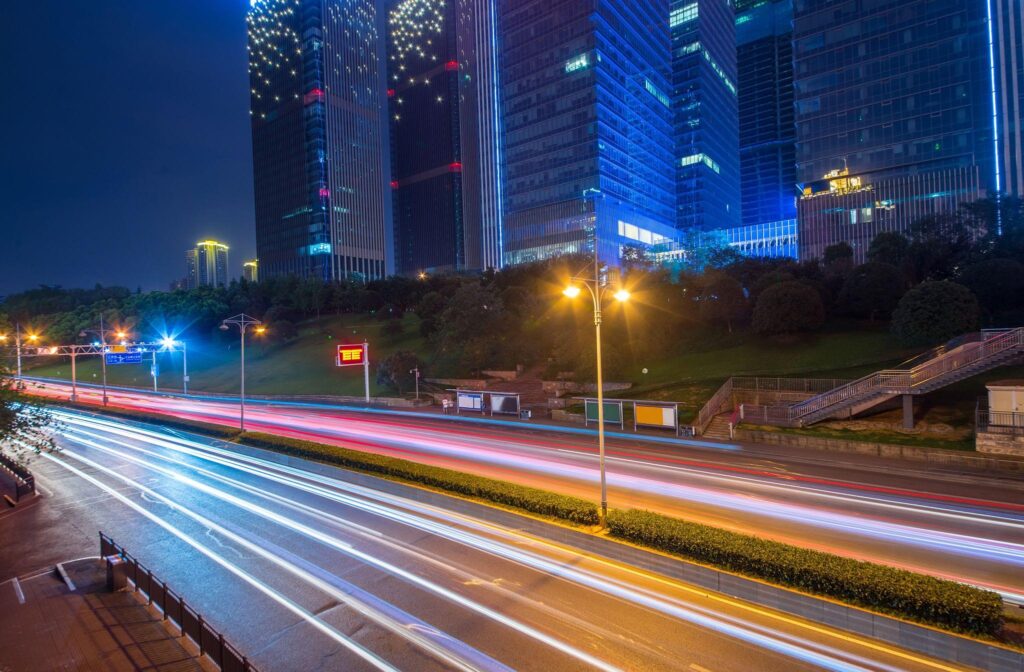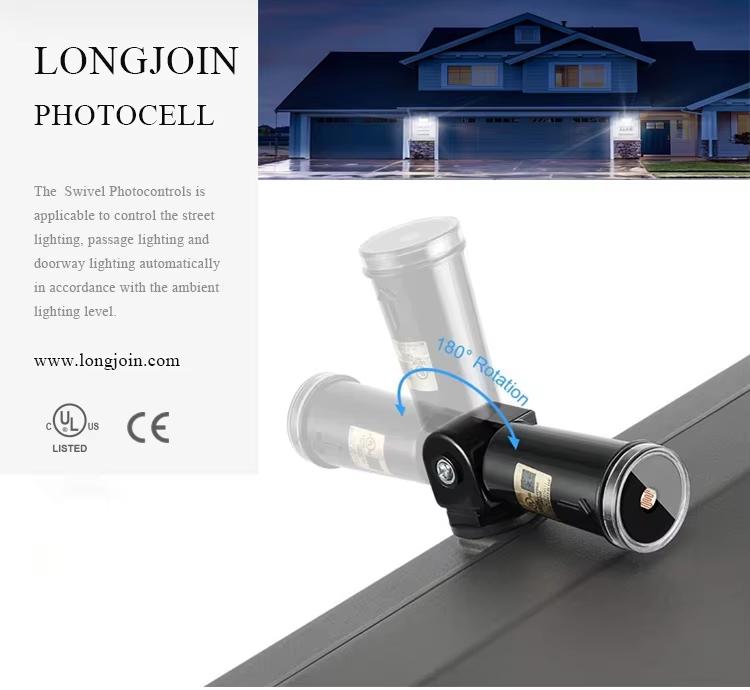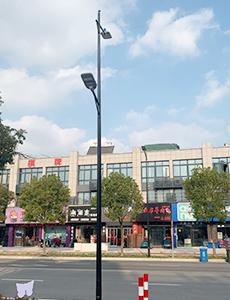Outline
- Introduction
- How Has Lighting Control Evolved with the Rise of IoT?
- What Does Full IoT Integration in Outdoor Lighting Look Like?
- How Will Dynamic Dimming Revolutionize Outdoor Lighting?
- How Will AI Enable Predictive Maintenance in Smart Lighting Systems?
- Why Must Manufacturers Adapt to the IoT-Driven Lighting Revolution?
- Competitive pressure
- Need for interoperability
- R&D focus shifts toward software integration
- Opportunities
- The Bottom Line

The current technological advancements are steering the world towards a new future. The outdoor lighting, once used only to illuminate, is now multi-purpose. The trend-setting development leading this change is the arrival of the Internet of Things.
Lighting has gone smart and networked. Cities all over the world are using outdoor LED lights with photocells to collect data, save energy, and improve safety, but what’s actually changing? This article looks to the future of intelligent lighting, from predictive maintenance to dynamic dimming, and what it means for manufacturers.
How Has Lighting Control Evolved with the Rise of IoT?
Traditional Outdoor Lighting Was Static and Manual
Outdoor lighting used to be a basic utility. Streetlights followed fixed schedules, either controlled manually or with simple timers. There was no consideration for real-time needs. As a result, lights often stayed on even when streets were empty, leading to massive energy waste. Maintenance was also inefficient, with repairs happening only after lights failed.
Integration Of IoT
The Internet of Things changed everything. Here are some pointers detailing this change.
- With the help of photo switch sensors, it enabled lights to connect, collect data, and communicate. Outdoor lighting shifted from isolated systems to connected networks. This connectivity allowed streetlights to adapt to actual conditions rather than sticking to rigid programs.
- Today, outdoor lights do much more than illuminate streets. They gather real-time data on parameters like traffic and environmental conditions. Lights with integrated light sensors automatically adjust their behavior based on this information, helping cities save energy and improve safety.
Early Smart City Success Stories
The table below outlines various cities showing how smart lighting could transform urban management. These examples proved that IoT-based outdoor lighting was not just futuristic—it was practical, scalable, and essential.
| City | Key Lighting Improvements | Measured Impact |
| Barcelona | IoT-connected streetlights with motion sensors | 30% energy savings, improved traffic management |
| Los Angeles | 215,000+ streetlights with remote monitoring | Over 60% reduction in energy usage, $10M annual savings |
| Singapore | Streetlights integrated with environmental sensors | Boosted city monitoring capabilities, optimized maintenance scheduling |
What Does Full IoT Integration in Outdoor Lighting Look Like?
Imagine a future where every light pole acts as a smart node. This is the reality IoT is bringing to outdoor lighting. Full IoT integration means lighting systems will no longer work in isolation. Each unit will interact with the city infrastructure through wireless networks and cloud platforms.

Key Features of Full IoT Integration:
- Remote control through mobile apps and centralized cloud systems.
- Real-time data collection for traffic flow, air quality, and environmental monitoring.
- Self-diagnosis capabilities to automatically detect faults and schedule repairs.
- Adaptive lighting adjustments with the help of photocell sensors based on live pedestrian and weather conditions, cultivated energy savings of upto 60%.
- Seamless communication with other smart city devices like surveillance, EV chargers, and public transport hubs.
This level of integration will deeply impact city operations. Energy use can be cut drastically by dimming lights during low-traffic hours. Fault detection becomes instant, saving costs on manual inspections. Ultimately, IoT will turn outdoor lighting into a powerful tool for smarter urban living.
How Will Dynamic Dimming Revolutionize Outdoor Lighting?
From Fixed Timers to Adaptive Lighting
Traditional outdoor lights worked on fixed schedules, leading to wasted energy. Dynamic dimming through dawn to dusk switches changes that. Lights now adjust their brightness based on real-time needs instead of rigid programming. Here is a table comapring fixed timer lighting with dynamic dimming.
| Feature | Fixed Timer Lighting | Dynamic Dimming Lighting |
| Energy Use | High | Optimized |
| Adaptability | None | Real-time adjustment |
| Public Safety | Static brightness | Responsive brightness |
| Maintenance Needs | Higher | Lower |
Role of Photo Sensors and Real-Time Data
Modern smart lighting systems rely on motion detectors, photocontrollers, and weather monitors. When a street is empty, the lights automatically dim. When movement is detected or weather worsens, brightness increases instantly to maintain safety.
Big Data and Predictive Brightness Control
Dynamic dimming is not just reactive. By analyzing traffic patterns and environmental trends through big data, lighting systems can predict future conditions. This predictive approach fine-tunes brightness schedules, saving more energy without sacrificing visibility.
How Will Long Join Lead the Dynamic Dimming Revolution?
LongJoin’s smart lighting controllers already integrate advanced sensor networks and real-time data processing. Their systems adjust brightness dynamically across urban areas, achieving higher energy efficiency, reducing light pollution, and improving public safety.
How Will AI Enable Predictive Maintenance in Smart Lighting Systems?

In traditional outdoor lighting systems, maintenance was purely reactive. Problems were fixed only after a complete failure. This often leads to costly downtime and public safety risks.
Ai has transformed the approach. It offers predictive maintenance. Lighting systems are continuously monitored. This helps with early fault detection and on-time repairs.
Key Benefits of AI-Powered Predictive Maintenance:
- Saves money on complete component failures by implementing early fixes.
- Minimizes unplanned outages, keeping public areas safely illuminated.
- Streamlines repair scheduling, conserving labor and materials.
- Makes the system more energy-efficient by ensuring optimal performance.
- Reduces manual inspection needs with automated system monitoring.
- Increases public trust through more reliable lighting services.
- Creates a safer environment by ensuring critical failures are eliminated.
- Enables data-based planning for future maintenance budgets.
- Lowers environmental impact by extending asset usage and reducing waste.
AI is not just about automation — it’s about making smart lighting systems predictive, reliable, and sustainable.
Why Must Manufacturers Adapt to the IoT-Driven Lighting Revolution?
Competitive pressure
Cities no longer want just basic lights. The demand is increasing for custom made street light sensors that integrate into smart city environments. As a response to this, companies have to reorient themselves.
Need for interoperability
Cities need devices that can work across multiple platforms. Standards like Zhaga and NEMA ensure that lights and photo controllers can communicate easily. If products don’t meet these open standards, they risk being excluded from major projects. Below is a table offering a comparison of Zhaga and NEMA Standards.
| Feature | Zhaga Book 18 | NEMA (ANSI C136.10 / C136.41) |
| Primary Focus | Standardized interface for LED modules and sensors | Electrical and mechanical connection standards for controls |
| Interoperability | High – promotes plug-and-play compatibility among components | Moderate – compatibility varies based on implementation |
| Geographical Adoption | Widely adopted in Europe and Asia | Predominantly used in North America |
| Integration with IoT | Designed for seamless IoT integration and future scalability | IoT integration possible with additional components |
R&D focus shifts toward software integration
It’s no longer enough to just improve the hardware. Manufacturers must focus on software integration. Offering features like remote firmware updates and strong cybersecurity protections is critical.
Opportunities
Manufacturers can form partnerships with IoT platform providers. They can also expand their offerings into broader smart infrastructure projects, beyond lighting alone. Adaptation isn’t just necessary — it’s a path to future growth.
The Bottom Line
Smart outdoor lighting is rapidly shifting from simple illumination to intelligent, citywide networks. Manufacturers and cities that embrace IoT, AI, and predictive systems will lead the future of urban infrastructure. For reliable, smart-ready photocells and lighting solutions, Chi-Swear offers trusted technology built for tomorrow’s cities.
External Links
- https://minnovation.com.au/smart-cities-2/example-of-a-smart-city-a-case-study-into-barcelona/
- https://lalights.lacity.org/connected-infrastructure/led_program.html
- https://statescoop.com/smart-city-surveillance-singapores-camera-system-stands-as-a-potent-deterrent/
- https://www.researchgate.net/publication/385950653_IoT-powered_street_light_management_Enhancing_fault_detection_and_reporting
- https://arxiv.org/abs/2211.00074?utm_source
- https://www.zhagastandard.org/index.php?option=com_content&view=article&id=340:zhaga-enables-iot-upgradeable-outdoor-led-lighting-fixtures&catid=22
- https://www.nema.org/






